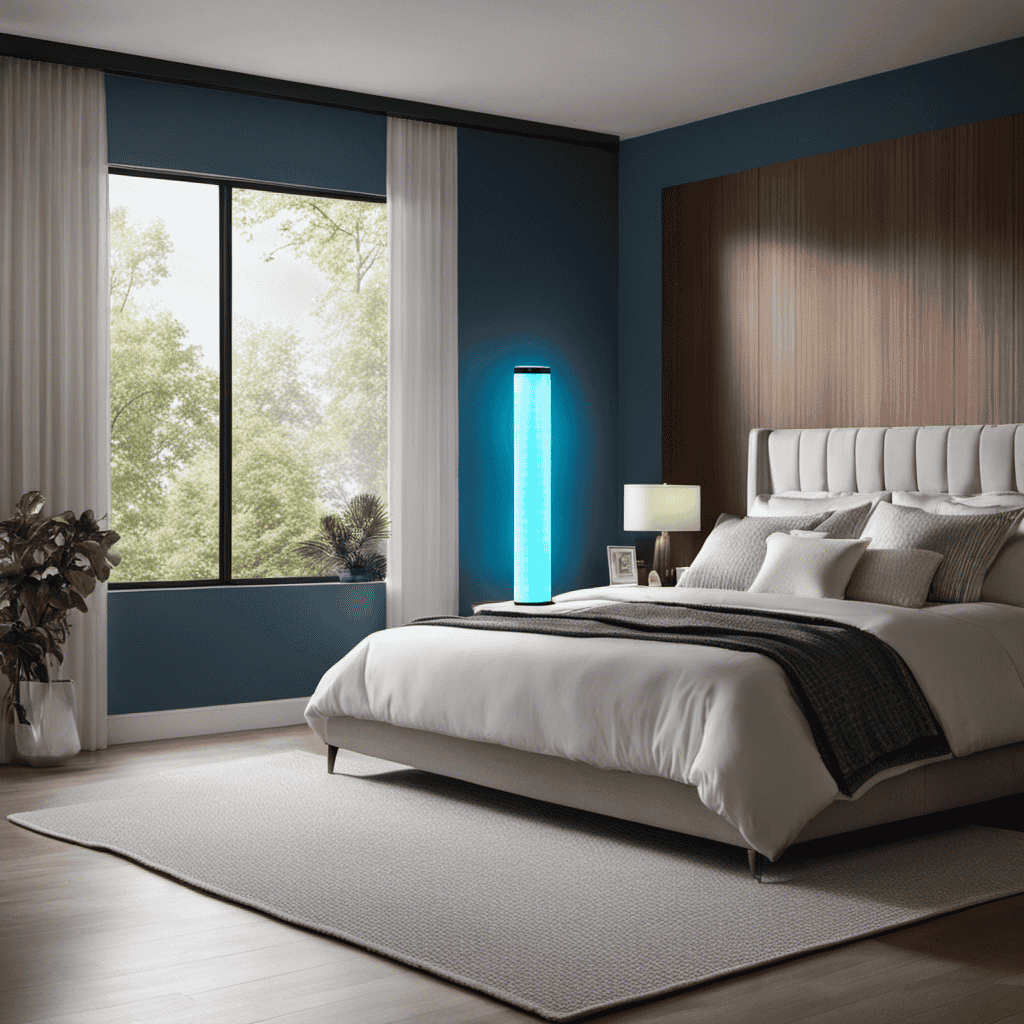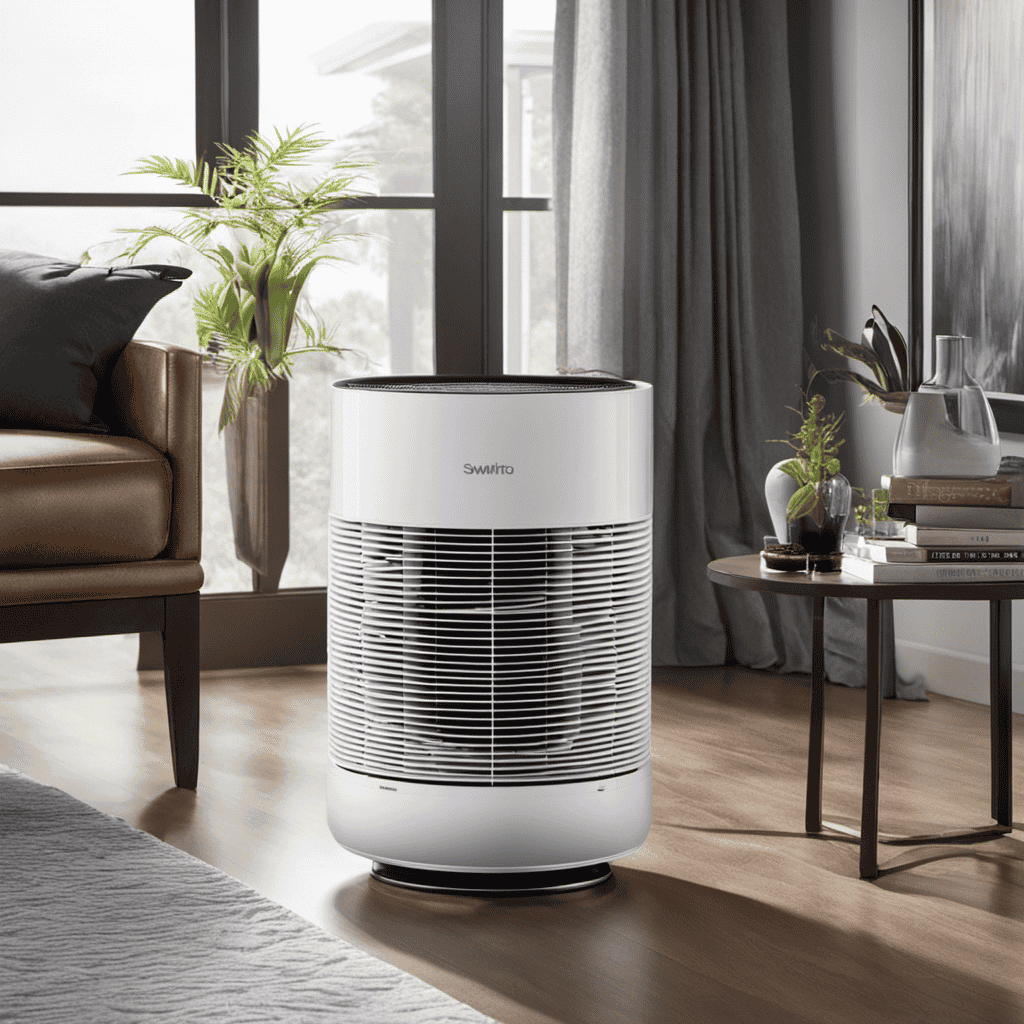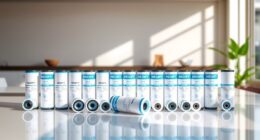As someone who owns an air purifier, I bet you’ve felt the annoyance of having a device that doesn’t quite meet your longevity expectations. However, don’t worry! In this article, I’m going to provide you with some proven tips on how to extend the life of your air purifier.
By implementing regular cleaning and maintenance, ensuring proper placement and ventilation, and promptly replacing filters and parts, you can avoid premature breakdowns and keep your air purifier running smoothly for years to come.
Plus, I’ll reveal additional enhancements to supercharge your purifier’s performance.
Let’s dive in!
Key Takeaways
- Clean filters regularly and follow recommended replacement frequency
- Ensure proper placement and ventilation to optimize airflow and prevent damage
- Stay on top of filter and parts replacements to maintain effectiveness and minimize costs
- Avoid overuse and overworking by setting appropriate fan speed and running only when necessary
Regular Cleaning and Maintenance
Regular cleaning and maintenance is essential to make an air purifier last longer. By regularly cleaning the filters and removing any accumulated dust and debris, you can ensure that your air purifier is functioning at its optimal level. Cleaning the filters not only improves the quality of air purification but also helps in increasing the lifespan of the device.
Additionally, it is important to check the manufacturer’s instructions regarding the recommended frequency of filter replacement. This will help in extending the durability of the air purifier as it prevents overuse of worn-out filters.
Furthermore, keeping the exterior of the air purifier clean and free from dust and dirt will also contribute to its longevity. Regular maintenance and cleaning are key factors in ensuring the effectiveness and longevity of your air purifier.
Proper Placement and Ventilation
To ensure your air purifier is effective, it’s important to place it in a well-ventilated area. Proper placement and ventilation play a crucial role in maximizing the performance and longevity of your air purifier. Here are some key factors to consider:
-
Optimal airflow: Ensure that there is enough space around the air purifier for proper air circulation. Avoid placing it against walls or furniture that can obstruct airflow.
-
Noise reduction: Place the air purifier away from areas with high foot traffic or where you spend most of your time. This will help minimize the noise generated by the purifier, providing a more peaceful environment.
-
Avoid direct sunlight: Direct exposure to sunlight can cause damage to the filters and other components of the air purifier. Place it away from windows or areas with intense sunlight.
-
Keep away from moisture: Moisture can lead to mold growth and damage the internal components of the air purifier. Avoid placing it in areas prone to high humidity, such as bathrooms or near water sources.
Taking these factors into consideration will ensure that your air purifier operates optimally and lasts longer.
Replacement of Filters and Parts
When replacing filters and parts, it’s important to follow the manufacturer’s instructions to ensure proper maintenance of your air purifier. Regularly changing the filters is crucial for maintaining the effectiveness of your air purifier and prolonging its lifespan. Different types of filters have different lifespans, so it’s essential to know when each filter needs to be replaced. Neglecting to replace filters on time can lead to reduced air quality and increased maintenance costs in the long run.
Additionally, some air purifiers may require the replacement of other parts, such as pre-filters or UV bulbs. By staying on top of filter and part replacements, you can optimize the performance of your air purifier and minimize maintenance costs.
Now, let’s discuss the importance of avoiding overuse and overworking your air purifier.
Avoiding Overuse and Overworking
Using your air purifier excessively or putting too much strain on it can reduce its effectiveness and potentially lead to mechanical issues. To avoid overuse and overworking, here are some tips to maximize efficiency and optimize performance:
- Set the air purifier to the appropriate fan speed for the room size and air quality.
- Clean or replace the filters regularly according to the manufacturer’s instructions.
- Avoid running the air purifier 24/7 if it is not necessary.
- Place the air purifier in a central location to ensure proper air circulation.
Utilizing Additional Air Purifier Enhancements
By utilizing additional enhancements, such as ionizers or UV-C lights, you can further improve the air quality in your home. Air purifier accessories like these are designed to target specific pollutants and enhance the efficiency of your air purifier.
Ionizers release negative ions into the air, which attach to positively charged particles like dust or pollen, causing them to clump together and fall to the ground, effectively removing them from the air you breathe.
UV-C lights, on the other hand, use ultraviolet radiation to kill bacteria, viruses, and mold spores, making the air cleaner and safer. These accessories can be added to your existing air purifier to enhance its performance.
Additionally, there are home remedies for air purification, such as using essential oils or natural plants like aloe vera or snake plants, which can help remove toxins from the air.
Frequently Asked Questions
Can I Use Any Type of Cleaning Solution for Regular Cleaning and Maintenance of My Air Purifier?
I can use various cleaning solutions for regular maintenance of my air purifier. It’s important to choose the right cleaning solution and follow proper cleaning techniques to ensure effective and safe cleaning.
How Can I Determine the Best Placement for My Air Purifier in My Home?
I determine the best placement for my air purifier by considering factors like room size, airflow, and proximity to pollution sources. Researching the best air purifier brands and following air purifier maintenance tips helps me ensure optimal performance.
Is It Necessary to Replace All Filters and Parts at the Same Time?
It is not necessary to replace all filters and parts at the same time. Following a regular replacement schedule and proper maintenance tips can help prolong the lifespan of your air purifier.
Can Leaving the Air Purifier on for Too Long Lead to Any Negative Effects?
Leaving an air purifier on for extended periods can have negative effects, such as increased energy consumption and wear on the device. Turning it off periodically can help conserve energy and prolong its lifespan.
Are There Any Additional Accessories or Features That Can Enhance the Performance of My Air Purifier?
There are various air purifier add-ons available that can enhance performance. One such feature is a timer, which allows you to set specific operating hours, optimizing energy usage and prolonging the lifespan of the purifier.
What Maintenance Steps Can I Take to Extend the Lifespan of my Air Purifier?
To extend the air purifier filter lifespan, regular cleaning and maintenance are crucial. Vacuum or wipe the filter regularly to remove dust and debris. Follow the manufacturer’s guidelines for filter replacement and keep the unit in a clean environment to maximize its effectiveness and longevity.
Conclusion
In conclusion, maintaining the longevity of your air purifier requires regular cleaning and maintenance, proper placement and ventilation, timely replacement of filters and parts, avoiding overuse and overworking, and utilizing additional air purifier enhancements.
By following these steps, you can ensure that your air purifier continues to function effectively and efficiently, providing you with clean and fresh air for years to come.
So take the necessary steps to extend the lifespan of your air purifier and enjoy the benefits of a healthier living environment.










